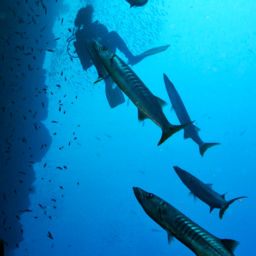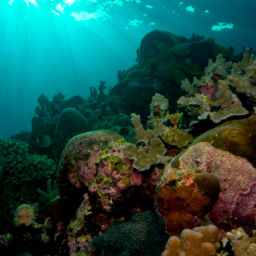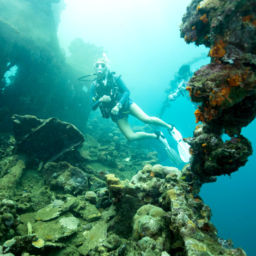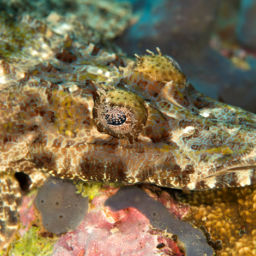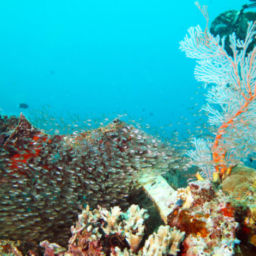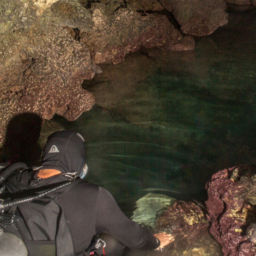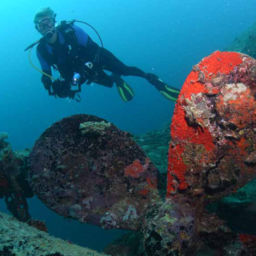In August of 1942, United States Marines launched a surprise attack on Japanese troops stationed on Guadalcanal in the Solomon Islands. Their victory that day in taking over the island’s new air base would prove decisive in the unfolding war in the Pacific Theater. But the entire Guadalcanal Campaign would last until the 9th of February 1943.
Although WWII fighting in the Solomon Islands took place 75 years ago, there are plenty of reminders of that seminal time both topside and underwater. I began a recent dive trip to the Solomons with a crash course in this history, alive around every corner.
Visiting Guadalcanal
From the moment you arrive in Honiara, the largest city and capital of the Solomon Islands on Guadalcanal Island, you’ll be part of this history too. Although the original airstrip is no more, international flights still land at Henderson Field, the location of the much-coveted air base that launched the fighting here in the first place. Upon taking the field, in fact, Marines named it Henderson for a marine aviator killed at Midway.
From that initial landing, it took six months for the Allies to entirely repulse the Japanese from Guadalcanal via both land and sea battles. In mid-September 1942, a Marine battalion moved into place on the ridge south of the airfield to prevent a Japanese approach from that direction. The ensuing fight became known as the Battle of Bloody Ridge. After assistance from Army aircraft, the Marines won the battle on the 14th of September. In memoriam, a plinth will be placed atop the ridge this year during the Guadalcanal 75th commemoration ceremony.
Aside from a visit to Bloody Ridge, visitors should not miss the Guadalcanal American Memorial, built on Skyline Ridge, a breezy hilltop overlooking Honiara. There’s a somber yet respectful aura here, where you can wander among the large granite plaques explaining the Solomon Islands’ WWII history.
Head west on Guadalcanal’s main coastal road to the open-air Vilu War Museum, a collection of picturesquely rusting armaments from island battles, including Japanese and American warplanes and gigantic anti-aircraft guns. On the way back east, stop at Bonegi Beach where, just offshore, the wrecks of the Hinokawa Maru and Kinugawa Maru, also known as Bonegi 1 and Bonegi 2 rest in shallow waters. The engine block of the Kinugawa protrudes from the water and both ships today make for fantastic shore dives. Finally, head west out of Honiara to Tetere Beach, where you’ll find nearly 40 tanks rusting among the lush jungle, just as the American troops left them when operations ceased on the island.
Attending the Guadalcanal 75th Commemoration
A vital part of the Allied victory on Guadalcanal is owed to the Solomon Islands Scouts and Coastwatchers (SSCT). Mostly Europeans, the Coastwatchers remained behind enemy lines to radio the Allies with news about the Japanese movements. Numbering in the hundreds, island natives acted as Scouts — the eyes and ears for the Allies. They spied on the Japanese and reported patrols, air and naval movements to the Allies.
This August marks the 75th anniversary of the beginning of the battle for Guadalcanal, and as such there’s a lengthy commemorative ceremony planned by the SSCT. There will be memorial services, a visit to Bloody Ridge for the monument dedication (mentioned above), and visiting warships from the United States, Australia and New Zealand in the harbor. For more on memorial activities, check the Coastwatchers Facebook page.
Getting to Guadalcanal
Getting to the Solomon Islands from the United States will usually require a stopover in Australia. Qantas operates daily flights to Brisbane from LAX, landing at around 6 a.m. Depending on what day you land, you can catch a Solomon Airlines flight to Honiara the same morning at 10 a.m., although they only depart from Brisbane on Monday, Wednesday, Friday and Saturday. Flights back to Brisbane run on Tuesday, Thursday, Friday and Sunday.
Staying on Guadalcanal
There are a few options for visitors to Guadalcanal, all in Honiara. Both Heritage Park Hotel and Solomon Kitano Mendana are in walking distance to area shops and restaurants downtown. Both hotels feature good restaurants of their own as well. A little further west is more upscale Coral Sea Resort, with five private villas and a still under-construction hotel block.
For more about visiting the Solomon Islands, check here.










